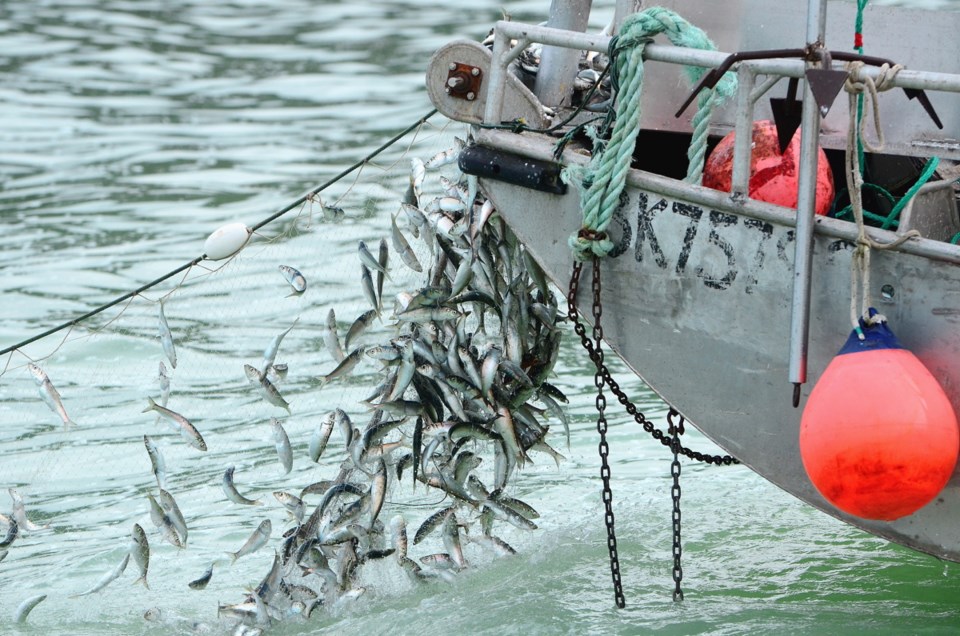VANCOUVER — Environmental groups are calling for the immediate closure of the herring fishery in the Strait of Georgia, citing steep declines in the herring population between 2016 and 2019.
But industry watchers can’t quite figure out their math.
Action is necessary to protect endangered chinook salmon populations and southern resident killer whales, said Ian McAllister, executive director of Pacific Wild. “Shutting the herring fishery down to let stocks recover should be the first course of action.”
He argued that the baseline for abundance set by Fisheries and Oceans Canada was created after local stocks had been depleted by a decades-long industrial-scale fishery. The Pacific herring fishery was shut down for several years, beginning in 1967, after populations collapsed due to overfishing.
In recent years, herring fisheries have been curtailed off Haida Gwaii and the west coast of Vancouver Island due to poor returns, and on the central B.C. coast at the request of the Heiltsuk First Nation.
Pacific Wild, Conservancy Hornby Island and other groups said herring in the strait have declined 60 per cent in the past four years, due to flawed forecasting and excessive harvesting.
The fishery quotas for 2019 were set based on an estimate of 122,000 tonnes of returning herring, but only 87,000 tonnes appeared, the groups said.
As a result, the fishery took 25 per cent of the return rather than the 20 per cent target set by Fisheries and Oceans.
Fisheries and Oceans confirmed that spawning biomass in the Strait of Georgia was “closer to the bottom half of the forecast range, resulting in a harvest rate of 25 per cent in 2019.”
But that is where agreement over the numbers stops.
To demonstrate the 60 per cent decline in biomass, the environmental groups used a high estimate from 2016 rather than Fisheries and Oceans’ stock assessment for that year, which has the effect of exaggerating the decline, according to the industry group Herring Conservation and Research Society.
“The model does show a declining trend since 2016, but it’s 22 per cent, not 60,” said spokesman Rob Morley, who recently retired from Canfisco. “It also shows that biomass doubled in the years before that, rising 100 per cent between 2010 and 2016.”
Herring populations fluctuate year to year in unpredictable ways depending on conditions and changes in predator populations. Salmon, seabirds, humpback whales, seals and sea lions all feed on herring.
Southern resident orcas rely on chinook salmon, which in turn feed on herring.
The proportion of young second-year herring preferred by mature chinook has increased since the 1980s, said Andrew Trites, a marine mammal researcher at the University of B.C.



